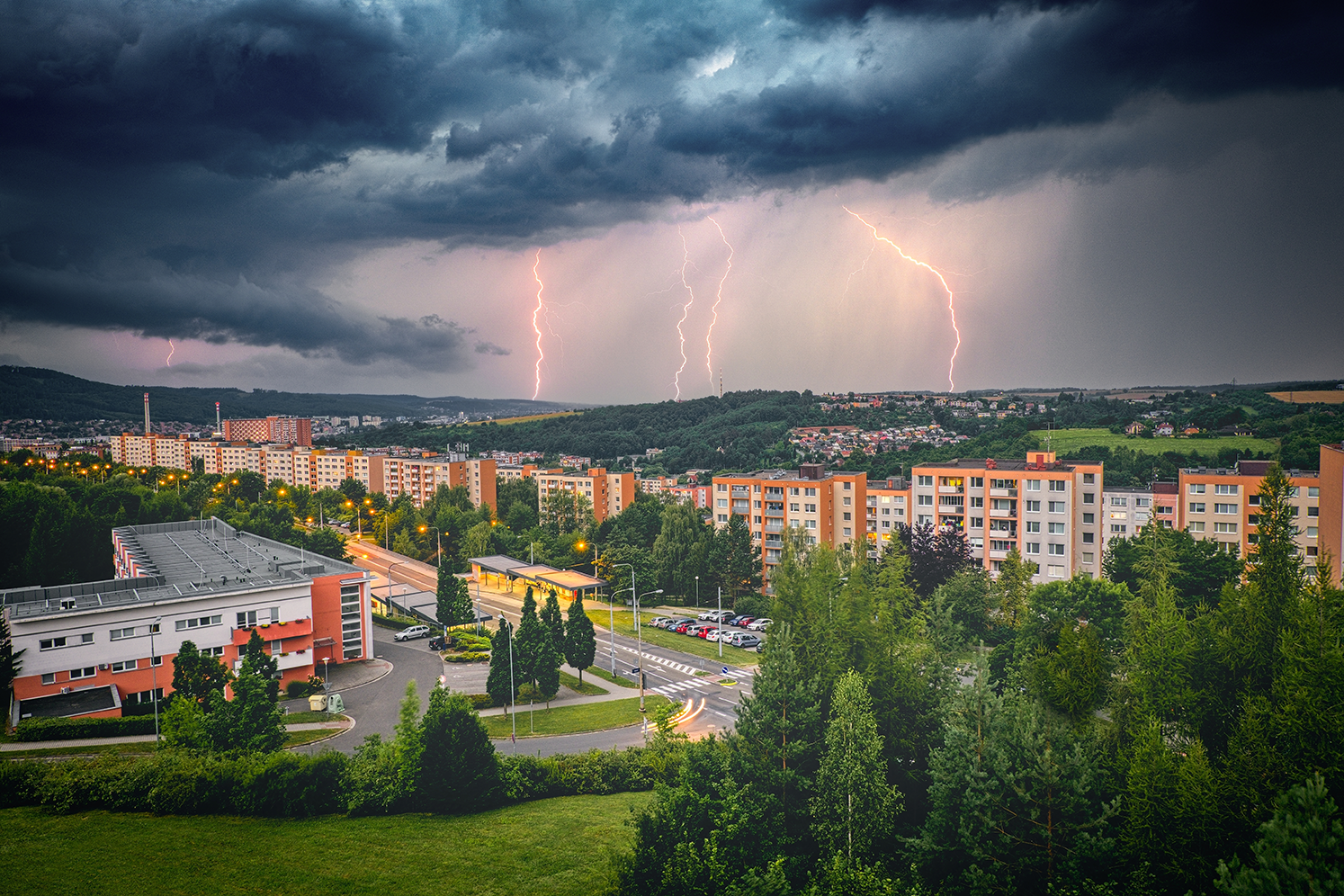This is the fourth installment of a five-part blog series based on the LightBox 2024 white paper titled “The Transformative Power of Technology in CRE,” highlighting LightBox’s role as CREW Network’s Data and Technology Program Partner. Given its broad breadth across key segments of CRE, LightBox is in a unique position to report on the technology trends taking root and how today’s CRE professionals are responding to them. These five trends are reshaping the landscape of our industry and unlocking myriad avenues for professionals to be more efficient, make smarter decisions, and reduce redundancy in their day-to-day operations.
In commercial real estate (CRE), the recognition of climate risk as a financial risk has been growing. “Climate considerations were increasingly driven to the forefront in recent years due to regulation and the higher frequency and severity of what were previously predicted to be low probability events, such as massive wildfires. We’re finally at the point in the CRE industry where climate risk is widely viewed as financial risk,” noted Zach Wade, VP of Data Science at LightBox.
Rising insurance costs and greater demands from lenders are intensifying the need for CRE firms to integrate climate data into their risk assessments. Two primary forces are at work: the escalating costs of insurance and the pressure on lenders to factor climate risk into their underwriting processes. Major storms like Hurricane Helene and Hurricane Milton make it harder for CRE investors and lenders to ignore the real financial risk associated with properties in areas prone to climate risks like excessive flooding. Under the Trump Administration, it is more likely that any future regulatory efforts related to climate risk will be at the state, rather than federal, level.
Technology Transforms Climate Risk Data
The past few years have seen advancements in technology that make climate risk data more accessible and actionable for CRE professionals. Technology has transformed this data from complex formats requiring specialized knowledge into user-friendly datasets that link directly to at-risk properties. Previously, assembling and analyzing this data required substantial engineering efforts; now, much of the information is pre-assembled, with insights readily tied to specific assets.
“Thanks to advancements in technology platforms, all of the key components are available pre-assembled and tied to buildings, alongside rich attribution on building resilience measures,” explained Wade. “This enables a more accurate and rapid understanding of how potential hazards will impact any given property today, and in the future.”
The Role of AI in Navigating Climate Data Abundance
The pendulum has quickly shifted from an environment of limited property-specific data on climate risk to one where data is growing exponentially. This trend presents a challenge for CRE professionals. Rich West, Head of Valuation at AEI Consultants, pointed out, “The challenge is that the landscape has shifted from a period of data scarcity to one of arguable data abundance. There’s urgency, but there is a lack of consistency in how data is analyzed and rated.”
AI-driven analytics tools offer a solution. By applying machine learning algorithms to vast data sets, AI can enhance data consistency, improving how CRE firms assess and mitigate climate risk. This shift toward standardized property valuations reflects an industry-wide move to adopt more holistic approaches, supported by innovations like building resilience scores.
The Next Phase of Climate Risk Analysis
As extreme weather events increase in frequency and severity, CRE professionals are beginning to integrate climate risk data with financial projections. Damage from natural hazards can affect a property’s financials in several ways, including repair costs, potential business interruptions, and even difficulties in obtaining insurance for specific risks. Additionally, rising emission standards bring the threat of fines, and new resilience measures can be costly to implement.
Wade expressed optimism about the future: “Beyond enhancing the rigor with which we assess these risks in CRE finance, I’m excited about advances in remote sensing technologies, such as synthetic aperture radar, which will enable better and faster monitoring of natural disaster events.”
Building Resilience for the Future
The convergence of AI and climate data represents a turning point for CRE firms facing climate-related risks. AI tools are already making it easier for CRE professionals to sift through massive datasets, automate resilience assessments, and identify properties with high exposure to climate hazards. AI’s potential to deliver real-time insights on weather patterns and predictive analytics enables a proactive approach, allowing companies to manage risk in ways that were previously impossible.
As CRE firms seek to future-proof their portfolios, the integration of climate risk assessment and AI-driven analysis is poised to become the standard. Climate risk is not just an environmental concern—it’s a critical business issue, and AI offers the tools necessary for the industry to adapt and thrive in a rapidly changing world.
Up next, the final installment in our tech series explores the explosive growth in data centers and how this is creating tomorrow’s CRE hot spots. Follow this page for in-depth analysis of how these technology trends are influencing the future of CRE, including our previous blog in this series about how technology is raising the bar on CRE brokers’ efficiency.
